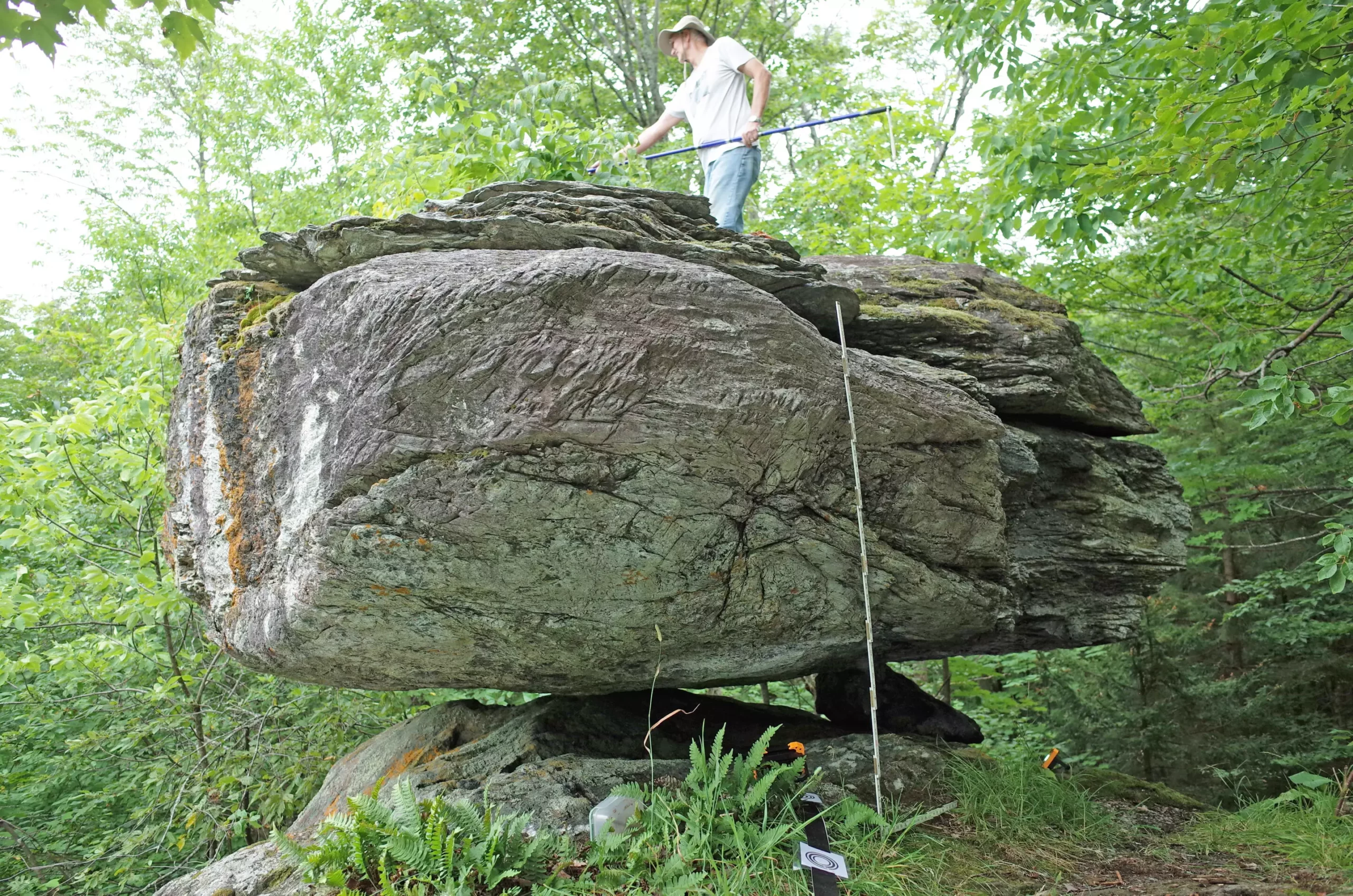The intricate relationship between geology and seismic activity has fascinated experts for centuries, serving as both a warning and a source of inquiry into the dynamic processes that shape our planet. A recent study focusing on five precariously balanced rocks (PBRs) in northern New York and Vermont has unveiled significant insights into understanding the seismic behavior of this relatively less-studied area. By analyzing these boulders—erratics deposited by ancient glaciers—the researchers have drawn connections between the geological history and the current earthquake hazard predictions for the region. This article delves into the findings of the study and its implications for regional seismic risk assessment.
The Science Behind Precariously Balanced Rocks
Precariously balanced rocks are naturally occurring structures that stand delicately on narrow bases, often shaped by the forces of nature over millennia. The study led by Devin McPhillips and Thomas Pratt from the U.S. Geological Survey presents a novel approach to quantifying the seismic threat in northeastern North America by assessing the fragility of these Geologic wonders. By understanding the conditions that would require an earthquake of a certain intensity to topple these formations, researchers can glean information about past seismic events—crucial for predicting future hazards.
According to the research, the particular PBRs studied likely represent thresholds of ground shaking intensity. The age of these rocks, estimated to be around 15,000 to 13,000 years due to post-glacial conditions, adds another layer of significance. They provide not just tangible evidence of geological history but also signal the potential seismic activity that has occurred over thousands of years.
The study implemented ground-based lidar and field observations to survey the toppled status of the PBRs accurately. Through meticulous measurements, McPhillips and Pratt calculated the stress thresholds required to dislodge these rocks. They analyzed factors such as peak ground acceleration (PGA) and the ratio of ground velocity to acceleration to determine how seismic forces impacted the stability of these rocks. The results yield a more refined model of potential earthquake activity, revealing that while most PBRs align with existing US Geological Survey hazard models, the one on Blue Ridge Road indicates a possible reduction in local seismic hazard.
Perhaps most intriguingly, the researchers generated a comprehensive map that illustrates the minimum distances from potential earthquake sources necessary to preserve the integrity of these rocks. This detailed mapping poses new questions and opportunities for defining active fault lines and understanding the seismic landscape better.
The implications of this study extend beyond the immediate locality of the PBRs. Northern New York and northwestern Vermont are characterized as areas of elevated seismic activity, having experienced several notable earthquakes throughout history. Past events, including the 1944 Massena quake and the 2002 Au Sable earthquake, have underscored the need for accurate seismic hazard assessments in this region. With the backdrop of a history that includes earthquakes of magnitudes reaching 7.3 to 7.9 nearby, understanding the stability and fragility of geological features becomes of paramount importance.
The findings of McPhillips and Pratt establish a connection between historical seismicity and potential future risks in a region that has often been overshadowed by studies in higher-risk areas such as California or New Zealand. By documenting the resilience of these historical geological formations, the researchers underscore the importance of regional studies that account for local geological variations in seismic hazard assessments.
The research not only highlights the significance of PBRs in describing seismic hazards but also points toward a broader agenda in seismic studies. McPhillips anticipates finding additional PBRs elsewhere, suggesting that the current study might only be the tip of the iceberg in understanding the seismic potential of the northeastern US. This opens avenues for further exploration, inviting new data collection and interpretation efforts that can refine our understanding of the intricate dance between geological formations and seismic activity.
As the study illustrates, incorporating local knowledge and leveraging recent advancements in technology can vastly improve our capabilities for earthquake forecasting and risk mitigation. The PBRs serve as valuable sentinels, bearing witness to the earth’s shifting tectonics while providing essential insights for future generations.
In summarizing the essential findings regarding precariously balanced rocks and seismic hazards, it becomes evident that geology offers a wealth of knowledge about past, present, and future earthquakes. By learning from the Earth’s ancient secrets embodied in these boulders, seismologists can arm communities with improved predictions and strategies to face potential seismic threats. As researchers continue to peel back the layers of geological history, we inch closer to a profound understanding of our planet’s movements and the ways we can prepare for its unpredictable nature.


Leave a Reply